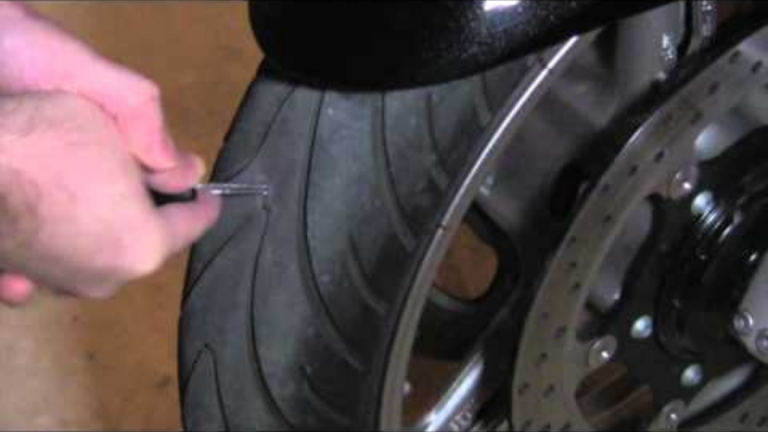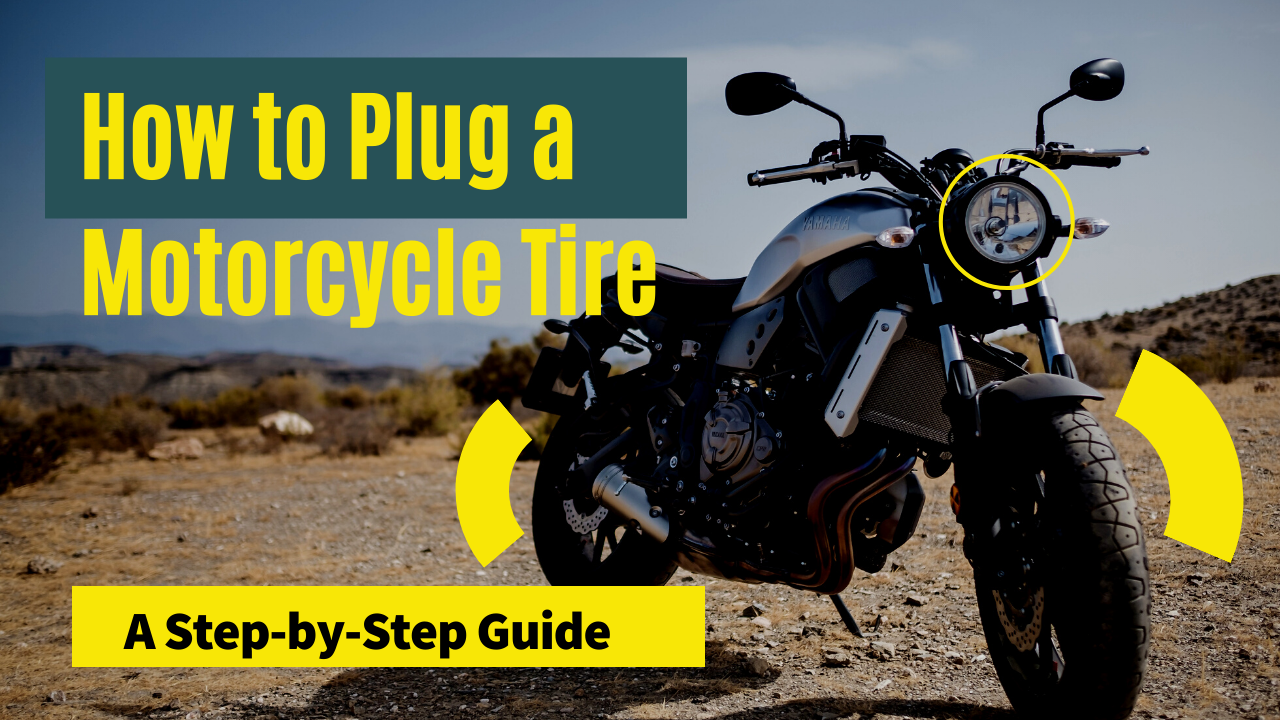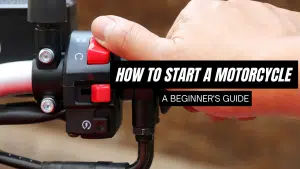If you’re a motorcycle rider, then you know that flats happen. And when they do, you need to know how to plug a motorcycle tire. It’s not difficult, but it’s not something that everyone knows how to do. In this blog post, we’ll walk you through the steps of plugging a motorcycle tire so you’ll be prepared if (or when) it happens to you!
What is Motorcycle tire plugging?
Motorcycle tire plugging is a quick and easy way to repair a punctured tire. It involves inserting a plug into the hole in the tire, which then expands to fill the hole and seal it. This repair method is ideal for small punctures, as it can be done quickly and does not require any special equipment. Additionally, it is relatively cheap and easy to do yourself, making it an excellent option for riders on a budget. While motorcycle tire plugging is not a permanent fix, it can get you back on the road quickly and safely.
What are the benefits of Motorcycle tire plugging
Motorcycle riders are always looking for ways to maintain their bikes and extend the life of their tires. One way to do this is by plugging the tires when they get a puncture. Tire plugs are typically made of rubber or latex, and they are inserted into the tire to fill the hole. The benefits of tire plugging are that it is a quick and easy way to repair a puncture, and you can do it without removing the tire from the bike. Additionally, tire plugs can help prevent further damage to the tire and improve its longevity. While tire plugs are not a permanent fix, they can buy time until you get your bike to a mechanic or replace the tire altogether.

How to plug a motorcycle tire
Anyone who has ever been stranded on the side of the road with a flat tire knows how frustrating it can be. You might have a spare tire to rely on if you’re lucky. But if you don’t, you’ll need to patch up the tire somehow. The good news is that it’s not difficult to plug a motorcycle tire, and all you need is a few supplies from your local hardware store. First, use a tire iron to remove the damaged portion of the tire. Next, clean out the hole with a wire brush and apply a layer of adhesive. Then, insert the plug into the hole and trim off any excess material. Finally, replace the tire and inflate it to the proper pressure. With this simple procedure, you’ll be back on the road.
How long will a plugged tire last?
Motorcycle tires are often subject to punctures and other forms of damage. While this can be frustrating, it’s essential to know how to deal with a flat tire. The best course of action is to replace the tire entirely in most cases. However, if you find yourself in a pinch, you can temporarily plug the hole. It will usually last for a few days or weeks, depending on the size of the hole and the type of terrain you’re riding on. Just check the pressure regularly and keep an eye out for any leaks. With a bit of care, you should be able to get your motorcycle back on the road in no time.
FAQs on How to Plug a Motorcycle Tire
You’re out on a ride, and you hit a nail. You didn’t see it on the road in time, and now you have a flat tire. If you’re lucky, the puncture is small, and you can put some plugging material in the hole and be on your way. If the hole is large, you’ll need to replace the tire. Here are some FAQs about how to plug a motorcycle tire.
What is the best way to plug a motorcycle tire?
If the puncture is small, you can insert some plugging material into the hole. Be sure to purchase a product specifically designed for use with motorcycles. If the hole is large, you’ll need to replace the tire.
What kind of plug should I use?
There are two types of plugs commonly used to repair motorcycle tires: string and mushroom. String plugs are Kevlar or nylon and are inserted into the hole. Mushroom plugs are made of rubber and expand to fill the hole.
Is it safe to ride on a plugged tire?
Motorcycle tires are designed to grip the road, providing stability and traction as you ride. However, tires can become worn down over time, making them more likely to slip on wet roads or lose traction on turns. When this happens, it’s time to replace your tires. However, if you’re short on cash or can’t find the right replacement tire, you might be tempted to ride on a plugged tire. But is this safe? While it’s not ideal, depending on a plugged tire is usually okay if the hole isn’t too big and the plug is installed correctly. Just be sure to check your tire frequently and watch for any signs of air leakage. And, of course, always ride safely and defensively.

How do I know if you can plug in a tire?
The best way to determine if you can plug in your tire is to consult your motorcycle’s owner’s manual. Some manufacturers void the warranty if a tire is plugged, so it’s best to check first. If you can’t find your owner’s manual, look for a patch of dry, clean rubber on the inside wall of the tire. If the patch is less than 1/4 inch thick, the tire is too worn and needs to be replaced. If the patch is more than 1/4 inch thick, you can safely plug your tire.
How do I know if my tire needs to be plugged?
If you have a puncture in your tire, you’ll likely be able to see it. However, if the puncture is small, it may not be immediately apparent. To check for holes, inspect the inside and outside of your tire for any sign of damage, such as a nail or piece of glass. If you can’t find the puncture, try using a flashlight to look for holes in the tire’s sidewall.
Conclusion
Now that you know how to plug a motorcycle tire, it’s time to put your skills to the test. Ensure you have everything you need before you start, and be careful not to injure yourself. With a bit of practice, this should become second nature, and you can easily do it on your own next time there’s a problem with your bike tires. Thanks for reading!





